plus sub section on Lucy Way Sistare Say,
a.k.a.
Lucy Say
Carol Sutton  Water Spirals &
Aqua Nebula
Water Spirals &
Aqua Nebula  by Walter Darby Bannard
by Walter Darby Bannard 1983
1983
-
| DATE:November 19
to December 8,1983 |
- Exhibition essay for
show at Gallery One, Toronto
- Paintings Series:Water Spirals & Aqua Nebula TM
- by Walter Darby
Bannand
|
 PLACE:Toronto,
Ontario, Canada PLACE:Toronto,
Ontario, Canada |
-
CASSIS LINNE ©
Carol Sutton,
- measurements: 79.5 x 89 in.; 201.9 x 226.1
cm,description: Water Spiral Series. (Triangle Artist Workshop, July
1983), Golden acrylic on canvas, 1987
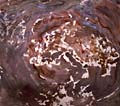
-
-
-
-
- CAROL SUTTON'S NEW PAINTINGS -
- Abstraction carries an uncomfortable authority
these days, uncomfortable in the making, uncomfortable in the market,
forced, Atlas-like, to carry the weight of the art of painting against
the odds. Painting which operates only on its own terms doesn't give
much of a handle to grab, doesn't let appreciation come in at different
"levels", doesn't make it easy. The market has long recognized the
pre-eminence of abstraction, implicit at least, but insists on
vulgarizing if for the sake of sales. The "New Expressionism" like Pop
Art before it, is watered-down, middle-brow abstraction with
illustration hung on it. It should be called "de-abstraction". The
straight realist painting today, as any sensitive observer knows, is
far better than the pseudo-abstraction now so much in favour, and
operates, from the inception, on a much higher plane of integrity.
-
-
- Being an abstract painter is a courageous
commitment, assuring exquisite frustration in the market. But it is
easier for us than it was for Abstract Expressionists. The market sees
us as hopelessly out of touch, beyond earshot, even, off the
band-wagon. But at least they don't think we're loonies. Some of us
even make a living form art. And there is an evolving environment of
support and professional encouragement, if not sales, manifested, for
example, by the Triangle Workshop in Pine Plains, NY, where I saw some
of the paintings in this show.
-
-
- If abstraction has a hard time in the market,
it's hard in the making too. Realism serves up two made-to-order
ingredients which do half the job for the artist: a "scene", which
tells in detail what the painting will look like, or can look like, and
deep space, a place to put the pieces where they can relate easily
across and open interior. This doesn't make it easier for realist paint
to be good, just easier to get started, and it clarifies what
has to be done to work it through. The Abstract painter has to invent
everything. I think that's why most of the best painters of the first
generation of abstractionists matured so late, and why so few of them
were consistently good. The first maps of any new territory are the
roughest.
-
- The first job of the abstract painter is to work
out a scheme to make elements on a visually flat surface relate
convincingly across the natural resistance of that surface: de Kooning
expanded Cubism, Kline built black and white skeletons, Pollock wove
airy nets, Rothko scrubbed on fuzzy, symmetric rectangles. Then come
Frankenthaler's pastel stains, Louis's centrifugal stream, Noland's
bright targets, Olitski's crammed edges. Each contrived a structure to
replace that of depicted reality. Each left his invention in the
inventory of form. There's a lot available to us now. That's one reason
why there are so many artist of Carol Sutton's generation painting so
well, so young without the painful blocks and disruptions that plagued
the older painters.
-
-
- Sutton's paintings of the last few years show us
what a sharp, practical talent can do with what's come down to us. They
give the impression of an untroubled inheritance, an art of enrichment
rather than extremity, with a felicitous, unaffected directional
structure, soft, pungent colour, surface open and breathing inside and
around the edges, values often close but unforced, the stroke casual,
unhurried , rippling carelessly like a banner in an easy wind. I know
this doesn't give away what went into the pictures. All painters,
certainly all young, serious painters, spend their days agonizing over
their art. It is to Sutton's credit that the character of her painting
belies the effort that went into them. There's a very fine long,
horizontal asymmetric picture called Titan in the Edmonton Art
Gallery
-
-
-
-
-
-
-
-
-
-
- which sums it up. Its easy going three-part
composition is made up of one long diagonal jammed up with thick
brushed acrylic greens, an opposing diagonal, very open, lightly swiped
with orange and blue, and shots of yellow and lilac spray here and
there, alongside and between the other colours. A sensual charge flows
for the colour, intensified by the compression of the horizontal edges,
which also precludes any left-over space around the attenuated
diagonals.
-
-
- Left-over space has been a problem for Sutton.
The horizontal/diagonal pictures all have that nice colour-charge,
sensual sweep and sparkling value change. But while a squarish painting
filled top-to-bottom with horizontal layers well overload and short out
the expressive effects, a squarish painting with a few layers asks that
the remaining space be brought in the picture. There is nothing wrong
with this situation. Olitski took it to an extreme in his great spray
paintings of the 60's. Sutton handles this "extra" space skillfully but
often as an afterthought, a necessity. And in art necessity can kill
invention.
-
-
- It may be fair to say that the two constituents
of the superior artist are talent and seriousness - the ability to make
good art plus the determination to make better art. And often it seems
that the latter is 99% of it. Seriousness is what makes an artist fight
herself and mess up a perfectly good style or method and go on to
things unexpected, unfamiliar and usually unwelcome, losing customers
and critical favour along the way. It's scary, and it is wasteful and
destructive. But it's also the way art gets better. I'd guess that
Sutton's new paintings will dismay many of her fans, because she has
taken the familiar layered formation and rolled it up like a pile of
rugs, a loose spiral which is ungainly, lacks clarity and certainly
sits more awkwardly inside the painted rectangle than the familiar
landscape form.
-
-
- I think Sutton instinctively recognizes that her
art, though carried by structure, get its life from variety of effect.
The horizontal format tempted her to decorate, to lay on some handsome,
arbitrary stroke or puff of spray, to get that space filled up with
nice colour. By folding the layered horizontals over on themselves the
painting was de-attenuated, concentrated, stuffed. The rectangle had to
go back toward the square, and the "left-over" areas, though still a
problem, diminish, hide in corners, and pick up various compositional
duties and the structure, clustered rather than dispersed, offers a
more fully rationalized environment for the playful bits of paint which
enliven the picture.
-
-
-
-
-
-
-
-
-
-
- Sutton made this change late in 1982, painting a
number of pictures which look like the earlier pictures rolled up. But
something else began working its way into the paintings, something for
which it now seems the new format was designed. For want of a better
word, I'll call it "indelicacy". The colours got dark, puddled and
smudged, the strokes coarsened, the intermediate passages clogged up.
The paintings in the show, most of which were painted at Triangle
workshop this summer, take it even further. Without knowing all of
Sutton's work I'd bet they are the best paintings she's done.
-
-
- They are not perfect. XENOPHORA EXUTUS, thought I
saw it unstretched, seems too complex to be so symmetrical. Stretched
up it might work - that marvelous breaking light might hold it. The
rolled section of VENUS RANG divides off just a bit too much from the
rest of the picture. WOBBLY KEYHOLE goes a little dark in the centre.
There are arguable conclusions, based on slides and memory. And
perfection is not the aim of good art. The paintings are first-rate,
and new, and that's enough.
-
-
- One of them CASSIS LINNE, gets out a little
further than the rest, into another mode of picture-making, one that
may be quite fruitful in the long run. The good thing about making
changes is the oddities that come up. CASSIS LINNE is coloursitically
duller than the other show paintings, less rich even that the grey and
white IMPERIAL DELPHINULA and CHARONIA TRITIONIS, and it lacks the
usual jivey surface embellishment. The spiraling darker areas turn
ponderously until they hit the lighter centre, which seems to come from
behind, to break through, like the moon through night clouds. This
pushes the slow, smokey, smudged surround into the foreground,
vitalizing it and vitalizing the picture, just as a stone hole shocks
the glazed placidity of a window pane. It is a fine effect, and fine
painting. The titles, incidentally , are seashells names, which are
appropriate even if they encourage the mis-understanding of the
"meaning" hounds, the people who still think the title comes before the
painting and the critics who ran out of things to say before they
learned to talk. Maybe you've got to hand these people something to
deal with, because it looks to me as if these pictures are going to be
tough to swallow. Well, the tougher the better. It only testifies to
their quality and originality.
-
-
-
-
-
-
-
-
-
-
-
-
| DATE: 1983 |
- Gallery One, Gallery Exhibition -Carol Sutton
|
 PLACE:Toronto,
Ontario, Canada PLACE:Toronto,
Ontario, Canada |
1983- " Water Spirals & Aqua Nebula",1984 - Rooster Conch,
(Brochure text written by Darby Bannard, with Biographical Notes
written by Carol Sutton), Gallery One, Toronto, Ontario, Canada,
November 19 to December 8, 1983
-

 CHARONIA TRITON (WATER SPIRAL SERIES)
CHARONIA TRITON (WATER SPIRAL SERIES)
- artist: Carol Sutton ©
- series: water spiral
- date: July 1983
- materials: Golden Paint Acrylic on cotton canvas
- measurements: 80 1/2 " x 91"
- description: Water Spiral Series. SIGNED, TITLED AND
DATED on VERSO --
- notes: Triangle Artist Workshop, July 1983
-
-
-
-

 BULLINA
NOBILIS
HABE (1) © (WATER SPIRAL SERIES)
BULLINA
NOBILIS
HABE (1) © (WATER SPIRAL SERIES)
-
- artist: Carol Sutton ©
- series: water spiral
- date: May 23, 1984
- materials: Golden Paint Acrylic on cotton canvas
- measurements: 80" x 93"
- centimeters: 203.2 cm x 236.2 cm
- description: Water Spiral Series. SIGNED, TITLED AND
DATED on VERSO --
- notes: BULLINA NOBILIS HABE (1) is the first of three
similar works; the other two are: BULLINA NOBILIS HABE (2) 84/06/28A or
June 28, 1984A, Size: 81.5" x 94.5", and BULLINA NOBILIS HABE (3),
84/06/28B or June 28, 1984B, Size: 80.5" x 94.5". both by Carol Sutton
- Painting titled BULLINA NOBILIS HABE (1) online at this
site.

- Canadian Colour Field Painters: Pender Salon at Buschlen
Mowatt Galleries; From Feb 7, 2011 - Feb 24, 2011; "This
exhibition will feature Canadian artists critiqued by
Greenberg working from the 1980s-1990s inspired by the tradition
that built New York as an international epicentre for centemporary art
and will include works by Harold Feist, Geoff Rees, Carol Sutton and
Doug Haynes, and Helen Frankenthaller."
-
- Canadian
Colour Field Painters- Pender Salon - Image: Bullina Nobiles Habe
: (by) Carol Sutton (at Buschlen Mowatt Galleries) -
http://www.buschlenmowatt.com/exhibitions/canadian-colour-field-painters-pender-salon
-
-
-
-
Painting titled CASSIS LINNE online at CCCA site.
http://www.ccca.ca {Now must navigate to my name:
click
'Artists', or 'Toronto' section under location.]

 CASSIS LINNE (WATER SPIRAL SERIES)
CASSIS LINNE (WATER SPIRAL SERIES)
- artist: Carol Sutton ©
- series: water spiral
- date: May 23, 1984
- materials: Golden Paint Acrylic on cotton canvas
- measurements: 80" x 93"
- centimeters: 79.5 x 89 in.; 201.9 x 226.1
cm
- description: Water Spiral Series. (Triangle Artist
Workshop, July 1983).
Rooster Conch © Carol Sutton

date: 1984
materials: Golden acrylic on canvas
measurements: 33.5 x 51 in.;
centimeters: 85.1 x 129.5 cm
description: Water Spiral Series.
 WALTER DARBY BANNARD: "from: Water Spirals
& Aqua Nebula -The
titles, incidentally, are seashell names, which are appropriate even if they
encourage the misunderstanding of the "meaning Hounds, the people who
still think the title comes before the painting and the critics who ran
out of thing to say before they learned to talk. Maybe you've got to
hand these people something to deal with, because it looks to me as if
these pictures are going to be tough to swallow. Well, the tougher the
better. It only testifies to their quality and originality."
WALTER DARBY BANNARD: "from: Water Spirals
& Aqua Nebula -The
titles, incidentally, are seashell names, which are appropriate even if they
encourage the misunderstanding of the "meaning Hounds, the people who
still think the title comes before the painting and the critics who ran
out of thing to say before they learned to talk. Maybe you've got to
hand these people something to deal with, because it looks to me as if
these pictures are going to be tough to swallow. Well, the tougher the
better. It only testifies to their quality and originality."
-
- (1983- brochure for 'The
Water Spiral Series' shown at Gallery One, Toronto,
Ontario, Canada - Walter Darby Bannard- Carol Sutton's
New Paintings, exhibition catalogue essay, Gallery One, Toronto,
Ontario, Canada,
November 1983)
-
- Who is Walter Darby Bannard? - LINKS -
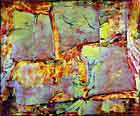
 #1.
http://bannard.com
#1.
http://bannard.com

 30 Books
that contain Walter Bannard in Ask Art.
30 Books
that contain Walter Bannard in Ask Art. 
-
-
LUCY WAY SISTARE  CONNECTION: TO SEASHELLS: CONNECTION: TO SEASHELLS: 
SEASHELL TITLES USED BY CAROL SUTTON, who is descendant
of the SISTARE / SUSTARE FAMILY.
|
-
 Lucy
Way SISTARE
Lucy
Way SISTARE 
- Sex: Female
- Event(s):
- Birth: 28 Nov 1800
- New London Twp, New London, Connecticut
- Death: 15 November 1886 , in Lexington, Massachusetts, of
pneumonia.
- Age eighty five, almost eighty six years old.
- Burial: New York City
- Parents:
- Father: Joseph SISTARE (1774-1829)
- Mother: Nancy Way (1775-1829)
- Residence: several trips to New Harmony, IN, lived with her
sister on Staten Island.
- Married: 4 Jan 1827; secretly married by civil ceremony in the
courthouse at Mt. Vernon, Indiana, attended only by Virginia Dupalais
and Louisa Neef.
- SPOUSE: Say, Thomas (27 Jan,1787- Oct 10, 1834, 7:00PM, evening)
. Entomologist, conchologist. {see more below}
- Relationship to Carol Lorraine Sutton is: 1C4R
 {First
Cousin Fourth Removed}
{First
Cousin Fourth Removed}
- Occupation: Artist, illustrator of seashells and nature
studies, wilderness explorer, executor of husband's Thomas SAY
estate, posthumous publication of Say's work. Honor: the first woman
elected to Academy of Natural Sciences membership , studied under
Audubon and Lesueur in 1824 -SEE SISTARE INSTRUCTION
-BELOW .
-
 Thomas
Say, American Conchology, or Descriptions of the Shells of
North America Illustrated From Coloured Figures From Original Drawings
Executed from Nature, Parts 1 - 6, New Harmony, 1830-1834; Part 7,
Philadelphia, 1836. (Some of the illustrations in American
Conchology were drawn by Mrs. Say.)
Thomas
Say, American Conchology, or Descriptions of the Shells of
North America Illustrated From Coloured Figures From Original Drawings
Executed from Nature, Parts 1 - 6, New Harmony, 1830-1834; Part 7,
Philadelphia, 1836. (Some of the illustrations in American
Conchology were drawn by Mrs. Say.) -
- [Charles Wilson Peale, an
oil portrait of Thomas Say in the uniform of the first Long
Expedition, 1819; Collection of the Academy of Natural Sciences of
Philadelphia]
-
- Lucy's SISTARE LINE: GENEALOGY DATA:
 Lucy
Way Sistare 1, sister to Sarah Lord Sistare, (born: 4 Nov 1816, New
York City, New York, who married:18 Dec 1835, Reformed Protestant Dutch
Church Of NY, by John Knox to Consul General of Nassau for United
States of America William Augustus{Carl Wilhelm} KOBBE ; Noted Business
Man Of New York City and the official Representative Of The Duchy Of
Nassau, a Merchant.. Sarah Lord Sistare Kobbe died age 79 in 1896 in
New York City. {Sarah had 10 siblings.}
Lucy
Way Sistare 1, sister to Sarah Lord Sistare, (born: 4 Nov 1816, New
York City, New York, who married:18 Dec 1835, Reformed Protestant Dutch
Church Of NY, by John Knox to Consul General of Nassau for United
States of America William Augustus{Carl Wilhelm} KOBBE ; Noted Business
Man Of New York City and the official Representative Of The Duchy Of
Nassau, a Merchant.. Sarah Lord Sistare Kobbe died age 79 in 1896 in
New York City. {Sarah had 10 siblings.} - ________________________
 Joseph
Sistare 2, {older brother to sibling: John Thomas Sistare, born in
1790, who was progenitor of the Kershaw, Lancaster District, South
Carolina line of Sistare's and Sustare's.} and
Joseph
Sistare 2, {older brother to sibling: John Thomas Sistare, born in
1790, who was progenitor of the Kershaw, Lancaster District, South
Carolina line of Sistare's and Sustare's.} and  Nancy
Way (born: 6 Oct 1775, New London or New Haven, Connecticut, died:
age 53, in the house of her father-in-law, John Way, on 21 Aug 1829)
Daughter of John WAY (Born: 6 Oct 1740[2843] at: New London, New
London, CT
Nancy
Way (born: 6 Oct 1775, New London or New Haven, Connecticut, died:
age 53, in the house of her father-in-law, John Way, on 21 Aug 1829)
Daughter of John WAY (Born: 6 Oct 1740[2843] at: New London, New
London, CT - Died: 11 Apr 1831[2844] at: New London, New London, CT) and Lucy
LORD (24 Apr 1749 - 18 Aug 1789); also of New London , New London, CT.
Joseph and Nancy had at least 11 children. {Joseph had 6 siblings.}
- ________________________
 Captain
Lazaro José Gabriel Sistéré/Sistare/Sistarre 3, [a.k.a. Don Gabriel
Sistare y Mityavila] [born: 1 May 1725 in Barcelona, Spain-
Captain
Lazaro José Gabriel Sistéré/Sistare/Sistarre 3, [a.k.a. Don Gabriel
Sistare y Mityavila] [born: 1 May 1725 in Barcelona, Spain-  died: 25 February 1795 at the age of
69; in New London, Connecticut][GGGG Grandfather to Carol Sutton]
died: 25 February 1795 at the age of
69; in New London, Connecticut][GGGG Grandfather to Carol Sutton] - and
 Elizabeth
BEEBE, daughter of Nathaniel BEEBE Jr. (1710->1767) and Lydia
Griffin (~1713->1767) {born: abt 1756, died, 11 September 1798, age
42, New London, Connecticut] Elizabeth was of English descent.
Elizabeth
BEEBE, daughter of Nathaniel BEEBE Jr. (1710->1767) and Lydia
Griffin (~1713->1767) {born: abt 1756, died, 11 September 1798, age
42, New London, Connecticut] Elizabeth was of English descent.
- ________________________
 Don
Gabriel Sistare Sr. 5 , father of the Captain who came to America,
Don Gabriel lived in Spain, Barcelona?
Don
Gabriel Sistare Sr. 5 , father of the Captain who came to America,
Don Gabriel lived in Spain, Barcelona? ,
, - [TIME LINE: Before Reign Of Felipe V Was
The First Spanish Bourbon King; 1700: With the death of Charles II, the
dynasty of the Habsburg comes to an end and the War of the Spanish
Succession breaks out, in which France, England and Austria are
involved. ]
- ;born: about 1700, died: August 1734, in Barcelona, Spain or at
Sea, [5G Grandfather of Carol Sutton, m. before 1724 to
 Marie
Mityavila, [5Great Grandmother of Carol Sutton] born: San Martin,
Cassa De La Selva, Gerona, Spain?
Marie
Mityavila, [5Great Grandmother of Carol Sutton] born: San Martin,
Cassa De La Selva, Gerona, Spain? , a cork producing place, about
1700, died : after 1726,
, a cork producing place, about
1700, died : after 1726, - ________________________
 Don
Gabriel SISTARE/CISTERE 6, circa: born before 1680, Spain
Don
Gabriel SISTARE/CISTERE 6, circa: born before 1680, Spain
- ________________________
- © by Carol Lorraine Sutton, daughter of Nancy Chester SUSTRE [
Nancy Chester Sustare is of the John Thomas Sistare line; i.e. Joseph
Sistare 2, brother.], April 4, 2002.
- TO VIEW CAROL's own SUSTARE or SUSTAR or SISTARE:
( Various spellings include-Sistaire, Sistera, Cistéré, Sistéré,
Sistaré, Sistaire, Sustare, Sisstare, Sustar, Sistair, Sistar,
Sistarelli)
-
 Genealogy
of Sustare -my Maternal side
Genealogy
of Sustare -my Maternal side -
link updated 2013:
-
- Southern branch of Sustare's from
South and North Carolina & Virginia decendants of
Captain Don Gabriel Sistare ( new full name -Lazaro José
Gabriel Sistare II)
-
- of Barcelona, Spain and then from New London, Connecticut,
1771, born 1725
-
WEBSITE: http://www.carolsutton.net/sustare/sustare-sistare_nc_va.html
-
- ------------------------------------------------------------------------
-
- Lucy and Thomas are both listed in Latter Day Saints files
-
-
- SISTARE , LUCY Way, INSTUCTION had been the finest at Marie
Fretageot's boarding school
 Charles
Alexander Lesueur (1 January 1778,Havre-de-Grace, France- 12 December 1846,
Havre, France) and
Charles
Alexander Lesueur (1 January 1778,Havre-de-Grace, France- 12 December 1846,
Havre, France) and  Audubon, John
James ( birth date
and place is disputed , New Orleans, 1780 or Aux Cayes, Haiti, 1785
-death date is undisputed at 1851)
Audubon, John
James ( birth date
and place is disputed , New Orleans, 1780 or Aux Cayes, Haiti, 1785
-death date is undisputed at 1851) - link:http://www.inhs.uiuc.edu/~ksc/Malacologists/LesueurC.A.html
- link:http://www.audubon.org/nas/jja.html
-
- ------------------------------------------------------------------------
-
- Quote- P.T. Stroud, from pages 266 and 267;
{also see 210: Lucy Say's study with Lesueur} : "Lucy could have been an artist of note
had circumstances been more favorable to her talent's development, for
her early instruction had been of the finest. At Marie Fretageot's boarding
school at Twelfth and Walnut Streets in Philadelphia, both Lesueur {Charles Alexander} and Audubon had
been her teaches. In describing to Benjamin Tappan her
nine-week stay in Philadelphia during the summer of 1837, she mentioned
that in addition to meeting Thomas Nuttall for the first time,
"[I] saw also my old teacher in drawing Mr. Audubon who I had
not seen since 1824 -- and then his great work had not yet been put
into the
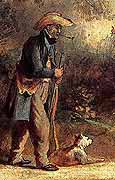 hands of the
engraver." {footnote -28 - is: [Lucy Say to Benjamin Tappan, New York,
1 October 1837, Tappan Papers, Library of Congress.]}
hands of the
engraver." {footnote -28 - is: [Lucy Say to Benjamin Tappan, New York,
1 October 1837, Tappan Papers, Library of Congress.]}
- [Painting to left: A detail of a painting by Karl
Bodmer, 1833, Watercolor. Collection: Joslyn Art Museum, Omaha,
Nebraska; title: 'Lesueur, the Naturalist, at New Harmony'.]
-
- ----When Audubon had come to Philadelphia in the spring
of 1824 in his unsuccessful attempt to find a publisher for his bird
paintings, he was as usual in need of money and had looked for work
teaching drawing to young ladies k as he had done elsewhere in the
past. Through his friendship with his fellow Frenchman Lesueur,
whom he had met at the Academy of Natural Sciences, Audubon
most likely secured a temporary position at Me. Fretageot's
school, where Lesueur had been teaching for three years.
-
-
- ----Lucy had also seen part of the
printed version of Audubon's Birds of America ( the
publication was not concluded until 1838) at the Academy that summer;
the members had subscribed for a complete copy of the elephant folios
for five hundred dollars. She observed to Tappan: " Many and
various opinions are expressed as to the merits of the work and the
author - I am disappointed in the execution of the plates - considering
the immense aid which he had at command and the price demanded for each
volume." { footnote 29- } In mentioning the diversity of opinions
expressed about Audubon and his work, Lucy
alluded to the controversy over his scientific accuracy in depicting
birds. One plate showed mockingbirds under attack by a rattlesnake, for
example, and some Academy members refused to believe that such a
confrontation was possible, In fact, later observers proved Audubon
correct: it is now known that the canebrake rattler,
common in the south , does indeed climb trees to dine on birds and
their eggs. {footnote 30- [ Robert Elman, 'First in the Field:
America's Pioneering Naturalists' (New York: Mason/Carter, 1977),
82.]. As to Lucy's remarks on the
quality of the engraving, one can only surmise that her own attempts at
the art had given he a thoroughly critical eye.
-
-
- ----Of Lucy's two teachers,
one achieved a fame that would become monumental with the years, while
the other would remain unknown to all but a few. " but what can be done
in regard to Lesueur?" Harris [Thaddeus W. had written
to her in 1835. " [He] seems forever lost to his friends and to the
world, after a debut the most brilliant. Will he too pass away without
leaving behind him any memorial so his eventful career, or any one to
record this history of his life & labours? {footnote-31 [Harris to
Lucy Say, pencil draft dated 1835, Harris Papers, Houghton Library,
Harvard University.]}
- ----After Say's death and Lucy's
departure, no one remained in New Harmony
 about whom Lesueur really cared,
except his ward, Virginia Dupalais, [C.L.S.
add in- Remember that Virginia Dupalais had been witness to Thomas Say
and Lucy Way Sistare's wedding in 4 Jan 1827.] who had married
and settled there. He had planned for years to return to France, so in
1837 he at last boarded the steamboat for New Orleans and sailed to
LeHavre. For a while he lived in Paris near the Jardin de Plantes,
earning a marginal living by teaching drawing, until in 1845 he was
chosen to direct a new natural history museum in his native Le Havre. Lesueur
moved there with his brother to a small house near the sea, to
begin at last a career with both the prestige to which he had so long
been entitled and the scope to use his prodigious talents. But he died
suddenly of heart failure the following year, on 12 December 1846, a
the age of sixty-eight."
about whom Lesueur really cared,
except his ward, Virginia Dupalais, [C.L.S.
add in- Remember that Virginia Dupalais had been witness to Thomas Say
and Lucy Way Sistare's wedding in 4 Jan 1827.] who had married
and settled there. He had planned for years to return to France, so in
1837 he at last boarded the steamboat for New Orleans and sailed to
LeHavre. For a while he lived in Paris near the Jardin de Plantes,
earning a marginal living by teaching drawing, until in 1845 he was
chosen to direct a new natural history museum in his native Le Havre. Lesueur
moved there with his brother to a small house near the sea, to
begin at last a career with both the prestige to which he had so long
been entitled and the scope to use his prodigious talents. But he died
suddenly of heart failure the following year, on 12 December 1846, a
the age of sixty-eight."
- {part of this last paragraph from page 168- STROUD} END Quote.
- ------------------------------------------------------------------------
-
-
- MORE NOTES ON THOMAS SAY
-
- Thomas SAY
- Sex: Male
- Event(s):
- Birth: 27 Jun 1787 ,Philadelphia, Phila., Pennsylvania
- Death: Oct 10, 1834, 7:00 PM, evening, New Harmony, Indiana
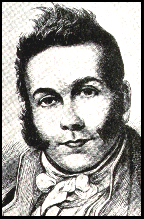 Burial: ?
Burial: ? -[find a
grave]- Behind
a house on the corner of Main and Grainery, New Harmony, Posey County,
Indiana USA
-[find a
grave]- Behind
a house on the corner of Main and Grainery, New Harmony, Posey County,
Indiana USA - (has
a lovely light drenched photo of his grave showing metal plate sign and
a biography by Leonard L. Brown.)

- LINK:http://www.findagrave.com/cgi-bin/fg.cgi?page=gr&GScid=640702&GRid=11835&
- http://www.findagrave.com/index.html
-
- Parents:
-
- Father: Benjamin SAY (born:28 Aug 1755, in
Philadelphia, Philadelphia County, Pa. and died: 23 Apr 1813,
Philadelphia, Pennsylvania County, PA; Burial Location Unknown.,
Honors: Congressman, U.S. Representative From Pennsylvania 1st
District, 1808-09.;Soldier Served In The Continental Army During The
Revolutionary War; Quaker/(Doctor Of Physic) (In Trust) For The
Religious Society Of Friends, Known By Name Free Quakers.
-
-
- Mother: Ann BONSALL ( born: ? , died: 1793)
- ------------------------------------------------------------------------
-
-
- ****
- "Thomas Say accompanied William Maclure and other
scientists and educators from Philadelphia on the famous "Boatload of
Knowledge." The party arrived in New Harmony, Indiana, in January,
1826. One of the passengers was the artist Lucy
Way Sistare, whom Say married secretly, near New Harmony, on
January 4, 1827.
- "In New Harmony, Say continued his
descriptions of insects and mollusks, culminating in two classics (See
books just below): "
-
-
-
-
-
-

 UPDATE
URL: http://faculty.evansville.edu/ck6/bstud/say.html
UPDATE
URL: http://faculty.evansville.edu/ck6/bstud/say.html
THOMAS SAY-
(1787-1834)-
father of American entomology
... New Harmony, Indiana, in January, 1826. One
of the passengers was the artist Lucy Way
Sistare, whom Say married
secretly, near New Harmony, on
January 4, 1827.
- ... with hyper links
- "In 1818 Say accompanied Maclure and others members of the
Academy on an expedition to the off-shore islands of Georgia and
Florida. In 1819-20, Major Stephen H. Long led an exploration to the
Rocky Mountains with Thomas Say as zoologist, and in 1823, Say served
as zoologist in Long's expedition to the headwaters of the Mississippi
River.
- During the 1819-20 expedition, Say first described the
coyote, swift fox, western kingbird, band-tailed pigeon, Say's phoebe,
rock wren, lesser goldfinch, lark sparrow, lazuli bunting, and
orange-crowned warbler.
- "Say was a taxonomist, as were most of the early entomologists,
and he described considerably more than 1,000 new species of beetles
and over 400 insects of other orders,
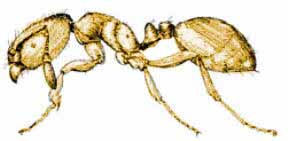 including species
in every important insect order. A hasty check of his writings shows
404 new species definitely listed from Indiana, including eight orders,
as follows:
including species
in every important insect order. A hasty check of his writings shows
404 new species definitely listed from Indiana, including eight orders,
as follows:
-
- 205 Hymenoptera [e.g., bees, wasps, ants] [See thief
ant to the left]
- 111 Diptera [e.g., flies, mosquitos]
- 17 Coleoptera [beetles]
- 38 Hemiptera [e.g., squash bug, stink bug]
- 11 Homoptera [e.g., cicadas]
- 1 Neuroptera [e.g., lacewings]
- 5 Ephemerida [e.g., mayflies]
- 16 Odonata [e.g., dragonfiles, damselflies]"
- ------------------------------------------------------------------------
-
"In New Harmony, Say continued
his descriptions of insects and mollusks, culminating in two classics:
"
-
TWO BOOKS BY THOMAS SAY:
 Thomas
Say, American
Entomology, or Descriptions of the Insects of North America,
3 volumes, Philadelphia, 1824-1828.
Thomas
Say, American
Entomology, or Descriptions of the Insects of North America,
3 volumes, Philadelphia, 1824-1828.
 Thomas
Say, American
Conchology, or Descriptions of the Shells of North America Illustrated
From
Coloured Figures From Original Drawings Executed from Nature,
Parts 1 - 6, New Harmony, 1830-1834; Part 7, Philadelphia, 1836.
Thomas
Say, American
Conchology, or Descriptions of the Shells of North America Illustrated
From
Coloured Figures From Original Drawings Executed from Nature,
Parts 1 - 6, New Harmony, 1830-1834; Part 7, Philadelphia, 1836.  (Some of the illustrations
in American Conchology
were drawn by Mrs. Say.)
(Some of the illustrations
in American Conchology
were drawn by Mrs. Say.)
[Illustration, from page 211, in the Patricia Shroud book, titled: Thomas
Say : New World Naturalist; quote: "Fig. 40. Arca zebra, "inhabits
the coastof the peninsula of Florida," by Lucy Say, plate 66 of
American
Conchology. Watercolor. Courtesy of the American Philosophical
Society."
end quote. ]
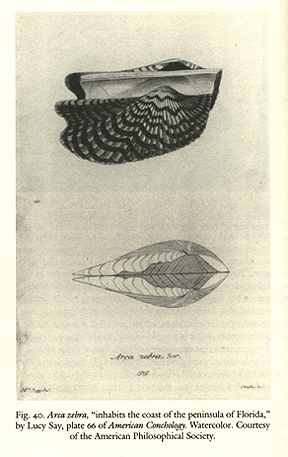 acra zebra shell illustration by Lucy Way
Sistare (Say)
acra zebra shell illustration by Lucy Way
Sistare (Say)
- Links honoring Thomas Say
- Canis latrans Say, [coyote]
- Vulpes velox Say, [swift fox]
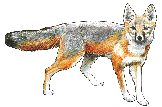 [see 'Say vulpes velox swift fox' to right]
[see 'Say vulpes velox swift fox' to right]
- Indiana State Insect (Proposed): Pyractomena angulata (Say), [Say's
firefly]
- Leptinotarsa decimlineata (Say), [Colorado potato beetle]
- Solenopsis molesta (Say), [thief ant]
- Birds named by or in honor of Say (Photos by Peter LaTourrette)
- Audubon drawings of birds first described by Thomas Say
- Birds named by Say (Photos by Harold Holt)
- Insects named by Say (3 photos)
- American Entomology, Thomas Say's book, the first of its kind
- Fishes Named in Honor of Thomas Say (drawing by Lesueur)
- [Above portion from
 Say
on EVANSVILLE EDU. URL:
http://faculty.evansville.edu/ck6/bstud/say.html
Say
on EVANSVILLE EDU. URL:
http://faculty.evansville.edu/ck6/bstud/say.html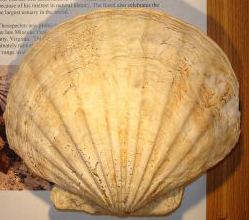
- +
 Thomas Say-(June
27, 1787 October 10, 1843) was an American naturalist, entomologist,
malacologist and crustaceologist.-
Thomas Say-(June
27, 1787 October 10, 1843) was an American naturalist, entomologist,
malacologist and crustaceologist.-
- (Thomas Say Conchology listings - http://www.inhs.uiuc.edu/~ksc/Malacologists/SayT.html
)
- right Thomas Say (June 27, 1787 October 10,
1843) was an American naturalist, entomologist, malacologist and
crustaceologist. He was a taxonomist and is often considered to be the
founder of descriptive entomology in the United States. Thomas Say was
born in Philadelphia into a prominent Quaker family.
- web -
http://www.termpapertopic.org/th/thomas-say.html - not working
site.
- &
- SAY names Chesapecten
Jeffersonus (Say) A 4 million year old fossil
(extinct scallop that lived in the early
pliocene epoch between four and five million years ago on
Virginia's coastal plain.)- In 1824, geologist John Finch gathered
a large collection of mollusk fossils, including
 Chesapecten
Jeffersonius (http://www.fossilshack.com/shells.html -
2013 update) from the vicinity of Yorktown, Virginia, and
gave them to scientists at the Academy of Natural Sciences of
Philadelphia (ANSP). Chesapecten Jeffersonius (Outside) Scientist
Thomas Say, at ANSP, described the species and named it Pecten
jeffersonius to honor Thomas Jefferson.
Chesapecten
Jeffersonius (http://www.fossilshack.com/shells.html -
2013 update) from the vicinity of Yorktown, Virginia, and
gave them to scientists at the Academy of Natural Sciences of
Philadelphia (ANSP). Chesapecten Jeffersonius (Outside) Scientist
Thomas Say, at ANSP, described the species and named it Pecten
jeffersonius to honor Thomas Jefferson.
-
-
- Thanks go to Dr. Gary E. Lohman of Great
Mills, Maryland for alerting me to these ancient fossil shells and others named by
Thomas Say, of the Upper Miocene Epoch and the Pliocene Epoch. Such as:
- Family Naticidae ( commonly called Moon Shell), of the St. Mary's
Formation:
- Polinices duplicatus (Say) and Lunatia heros (Say), both are fauna of the
Maryland Upper Miocene era.
- also the:
- Turritella plebia (Say), also in
the St. Marys County, Maryland, USA site of Miocene formations. "It is
a relatively small form with more or less convex whorls that are marked
with fine uniform, or uniformly alternating, spiral ribs."
-
- Phylum
...............Class...............Genus.............Species
- Mollusca............Gastropoda.........Turritella..........plebia
TWO BOOKS ABOUT THOMAS SAY:
TO
BUY BOOK at
at  AMAZON
: Thomas Say : Early American Naturalist
AMAZON
: Thomas Say : Early American Naturalist
http://www.amazon.com/exec/obidos/ASIN/0405107374/qid=1017944411/sr=1-5/ref=sr_1_5/002-2333128-5555228
 title:
Thomas Say: Early American Naturalist
title:
Thomas Say: Early American Naturalist - author: Harry B. Weiss,
Grace M. Ziegler
- Hardcover (June 1978)
- Ayer Co Pub; ISBN: 0405107374

-
- First published in 1931
- List Price: $26.95/Our Price: $26.95 at
Amazon
-
-
-
- AND:
-
 title:
Thomas Say : New World Naturalist
title:
Thomas Say : New World Naturalist - author: Patricia Tyson Stroud
[herself a member of the SAY family]
- ISBN: 0-8122-3103-1
- Publisher: University of Pennsylvanis Press
- (First full biography of Thomas Say in sixty years)
- © 1992-Thr Barra Foundation, Inc.
- Cover illustration: Portrait of Thomas Say by Charles
Wilson Peale. oil painting,
- Courtesy of The Academy of Natural Sciences of Philadelphia.
-
- CAN OFTEN BE PURCHASED ON MY FAVORITE
 MULTI - USED BOOK SEARCH
ENGINE: TRUSSEL:BOOKS AND BOOK COLLECTIONG : http://www.trussel.com/f_books.htm
MULTI - USED BOOK SEARCH
ENGINE: TRUSSEL:BOOKS AND BOOK COLLECTIONG : http://www.trussel.com/f_books.htm
- [which is where I ordered my own copy. C.L.S.]
-
-
- Included in book Thomas Say : New
World Naturalist, from page 270, quote: "Fig. 45. Lucy Say
in old age, ca. 1880. Photograph. Courtesy of The Academy of Natural
Sciences of Philadelphia."
- by author: Patricia Tyson Stroud
- Oval photographic portrait of Lucy Sistare Say,
was done late in her life about 1880:

ADDITIONAL WEB SITES ARE:
OWEN
MSS. http://www.indiana.edu/~liblilly/lilly/mss/html/owen.html
- 2k -
http://www.indiana.edu/~liblilly/lilly/mss/html/owen.html
- 2k -
... Dale Owen, Richard Owen, Robert Owen, Robert Dale Owen,
1801-1877,
Robert Dale Owen, 1879-1917, William H. Owen, WA Page and Mrs.
Lucy Way (Sistare) Say. ...
------------------------------------------------------------------------
The Owen mss., 1821-1911, are, in the main, letters and papers of
Richard
Owen, 1810-1890, son of Robert Owen, professor at Indiana University,
and
first president of Purdue University, and his descendants. Included are
also some letters of other members of the Owen family and prominent New
Harmony, Indiana, citizens.
Among the correspondents are John William Boehne, Jeremiah Tilford
Boyle,
James LeRoy Davenport, Mrs. Jane Dale (Owen) Fauntleroy, Emery A.
Foster,
J. B. Hunter, Mrs. Anna Eliza (Neef) Owen, David Dale Owen, Eugene
Fellenberg
Owen, Horace Pestalozzi Owen, Mrs. Katharine (Fitton) Owen, Katharine
Dale
Owen, Malcolm Dale Owen, Richard Owen, Robert Owen, Robert Dale Owen,
1801-1877,
Robert Dale Owen, 1879-1917, William H. Owen, W. A. Page and Mrs.
Lucy
Way (Sistare) Say. The first folder in the collection contains
biographical
information on Robert Dale Owen, David Dale Owen and William Owen, sons
of Robert Owen. See also Arthur H. Estabrook, "The Family History of
Robert Owen," Indiana Magazine of History, XIX, 63-101, March 1923.
Collection size: 163 items For more information about this collection
and
any related materials contact the Manuscripts Department, Lilly
Library,
Indiana University, Bloomington, IN 47405 -- Telephone: (812) 855-2452.
take me back to the text page outline
page outline
go to Quotes
page 
homepage
http://www.carolsutton.net/sutton_wd_bannard.html
e-mail Carol Sutton at : image used to combat spam: 
 September
17, 2005 [added in information on Cheaspecten jeffersonius, which Carol
recently purchased a specimen of.], First posted April 11, 2002- August
12, 2005, September 15, 2009, images page box added. / updated on
November
3, 2011 by adding painting: BULLINA NOBILIS HABE (1)
September
17, 2005 [added in information on Cheaspecten jeffersonius, which Carol
recently purchased a specimen of.], First posted April 11, 2002- August
12, 2005, September 15, 2009, images page box added. / updated on
November
3, 2011 by adding painting: BULLINA NOBILIS HABE (1)
© Copyright and All Rights Reserved, page design by
Carol Sutton



![]() CHARONIA TRITON (WATER SPIRAL SERIES)
CHARONIA TRITON (WATER SPIRAL SERIES)
![]() BULLINA
NOBILIS
HABE (1) © (WATER SPIRAL SERIES)
BULLINA
NOBILIS
HABE (1) © (WATER SPIRAL SERIES)![]()

![]() CASSIS LINNE (WATER SPIRAL SERIES)
CASSIS LINNE (WATER SPIRAL SERIES)![]()




 hands of the
engraver." {footnote -28 - is: [Lucy Say to Benjamin Tappan, New York,
1 October 1837, Tappan Papers, Library of Congress.]}
hands of the
engraver." {footnote -28 - is: [Lucy Say to Benjamin Tappan, New York,
1 October 1837, Tappan Papers, Library of Congress.]}  about whom Lesueur really cared,
except his ward, Virginia Dupalais, [C.L.S.
add in- Remember that Virginia Dupalais had been witness to Thomas Say
and Lucy Way Sistare's wedding in 4 Jan 1827.] who had married
and settled there. He had planned for years to return to France, so in
1837 he at last boarded the steamboat for New Orleans and sailed to
LeHavre. For a while he lived in Paris near the Jardin de Plantes,
earning a marginal living by teaching drawing, until in 1845 he was
chosen to direct a new natural history museum in his native Le Havre. Lesueur
moved there with his brother to a small house near the sea, to
begin at last a career with both the prestige to which he had so long
been entitled and the scope to use his prodigious talents. But he died
suddenly of heart failure the following year, on 12 December 1846, a
the age of sixty-eight."
about whom Lesueur really cared,
except his ward, Virginia Dupalais, [C.L.S.
add in- Remember that Virginia Dupalais had been witness to Thomas Say
and Lucy Way Sistare's wedding in 4 Jan 1827.] who had married
and settled there. He had planned for years to return to France, so in
1837 he at last boarded the steamboat for New Orleans and sailed to
LeHavre. For a while he lived in Paris near the Jardin de Plantes,
earning a marginal living by teaching drawing, until in 1845 he was
chosen to direct a new natural history museum in his native Le Havre. Lesueur
moved there with his brother to a small house near the sea, to
begin at last a career with both the prestige to which he had so long
been entitled and the scope to use his prodigious talents. But he died
suddenly of heart failure the following year, on 12 December 1846, a
the age of sixty-eight."  Burial: ?
Burial: ?
 including species
in every important insect order. A hasty check of his writings shows
404 new species definitely listed from Indiana, including eight orders,
as follows:
including species
in every important insect order. A hasty check of his writings shows
404 new species definitely listed from Indiana, including eight orders,
as follows: ![]() Thomas
Say, American
Entomology, or Descriptions of the Insects of North America,
3 volumes, Philadelphia, 1824-1828.
Thomas
Say, American
Entomology, or Descriptions of the Insects of North America,
3 volumes, Philadelphia, 1824-1828.![]() Thomas
Say, American
Conchology, or Descriptions of the Shells of North America Illustrated
From
Coloured Figures From Original Drawings Executed from Nature,
Parts 1 - 6, New Harmony, 1830-1834; Part 7, Philadelphia, 1836.
Thomas
Say, American
Conchology, or Descriptions of the Shells of North America Illustrated
From
Coloured Figures From Original Drawings Executed from Nature,
Parts 1 - 6, New Harmony, 1830-1834; Part 7, Philadelphia, 1836.  (Some of the illustrations
in American Conchology
were drawn by Mrs. Say.)
(Some of the illustrations
in American Conchology
were drawn by Mrs. Say.) acra zebra shell illustration by Lucy Way
Sistare (Say)
acra zebra shell illustration by Lucy Way
Sistare (Say) [see 'Say vulpes velox swift fox' to right]
[see 'Say vulpes velox swift fox' to right] 
![]() at
at ![]() AMAZON
: Thomas Say : Early American Naturalist
AMAZON
: Thomas Say : Early American Naturalist

![]() http://www.indiana.edu/~liblilly/lilly/mss/html/owen.html
- 2k -
http://www.indiana.edu/~liblilly/lilly/mss/html/owen.html
- 2k -
![]() September
17, 2005 [added in information on Cheaspecten jeffersonius, which Carol
recently purchased a specimen of.], First posted April 11, 2002- August
12, 2005, September 15, 2009, images page box added. / updated on
November
3, 2011 by adding painting: BULLINA NOBILIS HABE (1)
September
17, 2005 [added in information on Cheaspecten jeffersonius, which Carol
recently purchased a specimen of.], First posted April 11, 2002- August
12, 2005, September 15, 2009, images page box added. / updated on
November
3, 2011 by adding painting: BULLINA NOBILIS HABE (1)